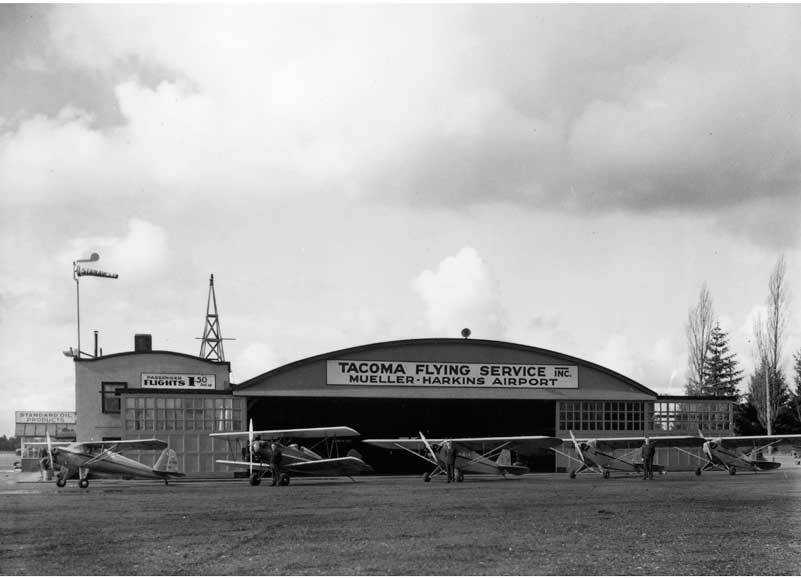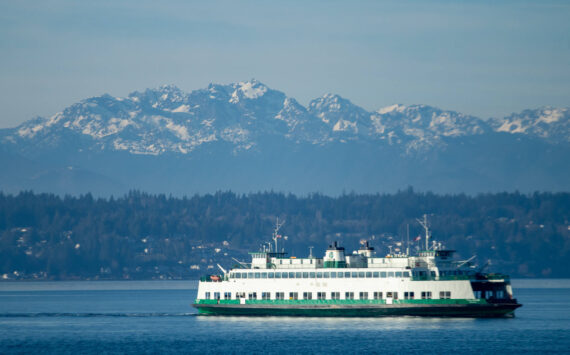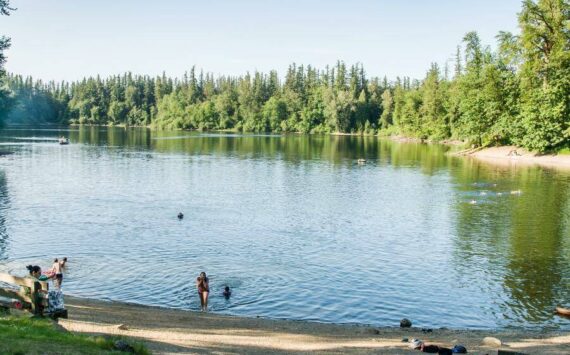By Morf Morford, Tacoma Daily Index
There has been a lot of controversy about the possibility of siting a full-sized airport in rural Pierce County.
To put it mildly, not many residents of that area welcome a Sea-Tac sized airport – and its corollary attachments – like hotels, restaurants, traffic and highway access. The expense, upheaval and environmental damage would be massive, and probably permanent.
The primary argument for the airport is simple; we need it.
Demand for air travel for passengers, cargo and mail – among other things – has grown dramatically and is expected to keep growing.
There’s nothing new about this argument. In fact we’ve been hearing it for about a hundred years now.
The first airmail arrived in our area in 1926 – in what was known as the Mueller-Harkins airport, which once flourished on what is now the campus of Clover Park Technical College.
The original hangar, at the original site, still stands and is used as a repair shop.
That airfield would serve as the Tacoma Municipal airstrip before the federal government assumed operations in 1944 and used it as a naval depot.
The Tacoma Flying Service was based there and had a federal contract to train civilian pilots before World War II.
For decades, rail lines connected Lakewood with the Port of Tacoma. Up until a few years ago fragments of those original rails were still visible. I mention this because air travel for mail, personal, business or military use has been a constant presence here for a long time.
Some early local airports
The Mueller-Harkins airport was one of many small, largely private airports and airfields that once flourished here.
I’m old enough to remember several of them. And many are still in use.
Clover Park Technical College shifted its aeronautical programs to Thun Field (near South Hill, Puyallup).
Up until it was damaged by a fire in 1969, the Tacoma Airport operated alongside Mildred Street (between South 19th and 27th) at the boundaries of Fircrest and Tacoma.
We even had a South Tacoma Airport in the big open area north of South 56th alongside South Tacoma Way. This area is largely industrial now, but the Airport Tavern (5406 S. Tacoma Way) still stands as evidence of the airport that once occupied that area.
The Spanaway Air Strip (opened in the late 1940s) was popular until it officially closed in 2018.
Not far from there is the currently operating Kapowsin Airfield in Graham.
And did you know that there was a US Army owned base near McChord AFB? The official name is Gray Army Airfield.
Still in use is the Tacoma Narrows Airport which opened in Gig Harbor in 1963.
The City of Tacoma operated the field until 2008, when Pierce County bought it through a partnership with the Peninsula Metropolitan Park District. The airport is the county’s primary business jet facility with about 94,000 takeoffs and landings each year.
Just south of Olympia is the Olympia Regional Airport.
Just a few miles east of Pierce County, as part of the Port of Shelton, you can find Sanderson Field. Sanderson took over the skydiving company from Kapowsin, but kept the name.
If you are inclined to jump out of airplanes, (or if you’d pay to see me pushed from an airplane in flight) you can make reservations here.
And on the southern edges of King County are the Auburn Municipal Airport and Renton Municipal Airport.
In short, there are (and have been) airports just about everywhere – in every direction, for almost any purpose from skydiving to shipping to touring trips.
The irony of course, is that, even though air traffic has grown, the number of airports has shrunk.
You’d think that, if anything, airports would proliferate and be placed more strategically and less centralized to meet the needs of those in outlying areas.
And who among us has not had a frustrating, if not border-line disastrous experience related to flight in the past few years?
Who wouldn’t want a less intrusive, less isolating, and in most cases, far cheaper, even more comfortable travel experience?
Or even, especially given the recent problems with air travel thanks to weather, computer glitches and security, we would invest in something other than flight and develop a system of high speed rail as most of Europe and much of Asia has already done. And see, if not experience, scenery at eye level – and at a tolerable pace.
By most accounts, the Amtrak Coast Starlight train car is the best way to take in the sights and wonders of the West Coast. This soothing and near-hypnotic railway adventure meanders through California, Oregon, and Washington affording passengers incomparable city views of major (and scenic) cities like Santa Barbara, San Francisco, Sacramento, Portland, and Seattle, and unmatched vistas of lush natural beauty between.
The range of landscapes along this route is considered to be among the most gorgeous in North America. The pristine snow-capped peaks of the Cascade Range, lush and varied forests, and miles of breathtaking shoreline along the Pacific Ocean just might make you feel that you are seeing, maybe even discovering, our country for the first time.
Instead of looking down from 30,000 feet at a bland, unidentifiable landscape, see what our beautiful country really looks like up close without the near constant probing and humiliations (and costs) of airports.
Establishing a new airport (of any size) requires a massive amount of land, right-of-way clearance, dislocation and access – and, of course security.
In many cases, a high speed rail system could be built on existing, unused or abandoned rail lines. You can see a continually updated map of out-of-service rail lines here.
Many rail lines have been converted to trails but others could just as easily (almost) be reconstituted as high speed rail.
Whichever way we end up going, ever more complicated, dangerous, intrusive and vulnerable (not to mention expensive and frustrating) air travel is probably not the way most of us would prefer to travel.
Most of us have become so accustomed to cars and planes that we can’t even entertain the thought that there might be something different – let alone, in some cases better. And safer, and more conducive to an enjoyable experience.
And if you think traffic on the ground is intense, take a look at the traffic over head here.





